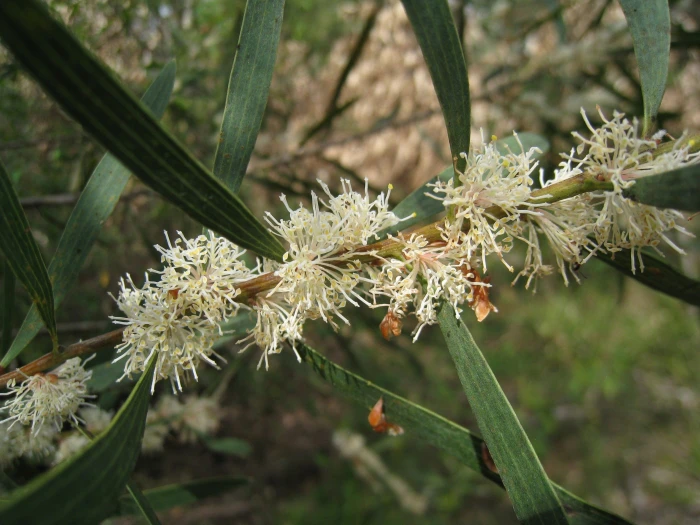Finger Hakea
(Hakea dactyloides)
Finger Hakea (Hakea dactyloides)
/
/

John Tann from Sydney, Australia
CC BY 2.0
Image By:
John Tann from Sydney, Australia
Recorded By:
Copyright:
CC BY 2.0
Copyright Notice:
Photo by: John Tann from Sydney, Australia | License Type: CC BY 2.0 | License URL: https://creativecommons.org/licenses/by/2.0 | Uploader: File Upload Bot (Magnus Manske) | Publisher: Wikimedia Commons | Title: Hakea_dactyloides_3.jpg | Notes: User created page with UploadWizard |



















Estimated Native Range
Climate Requirements for Midlothian, Texas
| This Plant | Your Site | Plant Suitability for Your Location | ||
|---|---|---|---|---|
| • Precipitation | 40" - 48" | 36" | Aquatic | Aquatic |
| • High Temp. | 74°F - 81°F | 95°F | Your summer temperatures are normal for this plant. | Excellent |
| • Low Temp. | 34°F - 45°F | 34°F | Your winter temperatures are normal for this plant | Excellent |
This plant should grow well at your location with about N inches per year (Y minutes per month) of irrigation.
Summary
Hakea dactyloides, commonly known as Finger Hakea, is an evergreen shrub or small tree native to the sclerophyll forests and coastal heaths of Eastern Australia. It typically grows to a height of 2-5 meters with a similar spread, featuring a dense and bushy habit. The leaves are long, slender, and finger-like, which is how the plant gets its common name. Finger Hakea produces sprays of cream-white flowers, often with a pink tinge, that are arranged in axillary clusters along the branches. The flowering season is primarily from October to November, and while the flowers are not overly showy, they are attractive to a variety of pollinators.
Finger Hakea is valued for its hardiness and quick growth, making it a suitable choice for home gardens, urban plantings, and as a windbreak or screen due to its dense foliage. It is also used for habitat restoration projects. This species is drought-tolerant once established and prefers well-drained soils, thriving in full sun to part shade. While it is generally low-maintenance, it can be susceptible to root rot in poorly drained soils and may attract pests such as Hakea psyllids. Gardeners should be aware that the seed pods are woody and can be sharp.CC BY-SA 4.0
Finger Hakea is valued for its hardiness and quick growth, making it a suitable choice for home gardens, urban plantings, and as a windbreak or screen due to its dense foliage. It is also used for habitat restoration projects. This species is drought-tolerant once established and prefers well-drained soils, thriving in full sun to part shade. While it is generally low-maintenance, it can be susceptible to root rot in poorly drained soils and may attract pests such as Hakea psyllids. Gardeners should be aware that the seed pods are woody and can be sharp.CC BY-SA 4.0
Plant Description
- Plant Type: Shrub, Tree
- Height: 6-8 feet
- Width: 6-8 feet
- Growth Rate: Moderate
- Flower Color: White, Pink
- Flowering Season: Winter, Spring
- Leaf Retention: Evergreen
Growth Requirements
- Sun: Full Sun, Part Shade
- Water: Low
- Drainage: Fast
Common Uses
Bee Garden, Bird Garden, Butterfly Garden, Hedges, Low Maintenance, Potted Plant, Street Planting
Natural Habitat
Sclerophyll forests and coastal heaths of Eastern Australia
Other Names
Common Names:
Scientific Names: Hakea dactyloides, Conchium nervosum, Hakea dactyloides var. angustifolia, Banksia dactyloides, Banksia oleifolia, Conchium dactyloides, Hakea dactyloides var. latifolia, Hakea incrassans, Hakea leucopoda
GBIF Accepted Name: Hakea dactyloides (C.F.Gaertn.) Cav.